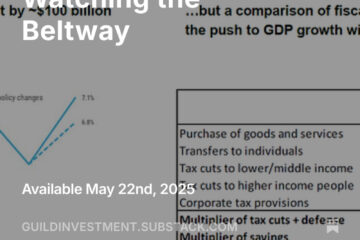What the Fed Means For Your Portfolio
World markets are facing a major change, as interest rates have begun a multi-year uptrend.
U.S. and foreign economic data continues to improve. On many fronts, including employment, capital spending, salary increases, backlogs of orders, housing demand, retail sales of home-related items, and many others, the economic outlook for the U.S., Asia, Europe, and the world continues to improve.
U.S. and foreign interest rates are in a rising trend, and will continue to rise for several more years as higher economic growth, higher employment, and higher incomes continue to support business and consumer confidence in a virtuous cycle.
As a result of rising interest rates since mid-2016, the multi-decade bond market rally has come to an end. Therefore, two new trends are in place: first, bonds will prove to be uncompetitive with stocks; and second, income stocks will be uncompetitive with stocks that can grow and raise their dividends. Investors who must own bonds should own very short maturities.
Bonds
We warn our readers to be vigilant, to avoid bonds with over 3–5 year maturities, and to avoid bond proxies for income accounts. A bond with a maturity of 10 years or more can cause a substantial loss of capital as interest rates continue to rise. In our view, it is wiser to own growth stocks that can raise dividends, until such time as bond yields reach peak and start to decline. Assuming a period of normal economic growth, such a peak in bond yields may be several years away.
Stocks: a Buying Opportunity is Near
World markets, especially the U.S., are finally experiencing a correction after the market rally that began in November, 2016. As we have seen on numerous occasions over the last few years, such corrections are buying opportunities. Historical trends argue strongly for a correction in US stocks prices of 4–7% and they also argue strongly for a rise in stock prices for the remainder of 2017.
In spite of rising interest rates, core inflation will remain low; inflation will rise, and interest rates will rise more. Today CPI core inflation is running at about 2.2%, and 10-year bonds only pay 2.44%; 10-year bonds should normally yield at least 2% more than inflation. So interest rates must continue to rise. If inflation goes to 3%, interest rates could double from here. The Federal Reserve uses core inflation to determine their interest rate policy; for this reason, we expect interest rates to rise, but to stay very close to the rate of inflation. History has repeatedly shown that as long as interest rates are not at least 2% above the core inflation rate, it will not lead to monetary tightness and a recession. So we expect no recession soon.
Outside a recession, a normal 4–7% correction should be enough to spur demand for stocks, and send stock prices up. Currently, stocks have fallen by about 2.5%, so we are nearing the time when they can be bought. Further, stocks in some industries have fallen much more than the market, so they can create good buying opportunities.
We continue to favor the following:
1. Technology growth stocks which have high earnings visibility into the future;
2. Regional bank stocks. Some regional bank stocks have come down in price in the last few days, and can make a very good buys in our opinion;
3. Financial services companies in the credit card and insurance areas;
4. Major banks; and
5. Materials stocks that will be benefitted by the administration’s desire to create better trade deals for the US and to discourage dumping of goods in the US.
Non US Markets
We like Germany. No need to hedge the currency.
Oil
Oil continues under pressure due to higher U.S. production and cheating by OPEC producers on quotas. Unless Saudi Arabia cuts production more, they will not get oil up to their hoped-for $70/barrel. We are cautious on oil, and are waiting for action by the Saudis. Strong and growing U.S. production is not bullish for oil prices long-term.
Gold
Gold continues to make gradual progress; hold and wait for dips to buy. U.S. inflation is at 2.2% core and 2.7% actual. With oil price falling, inflation will moderate. Gold has some drivers for gradual appreciation. Global political problems or much more rapid inflation will be required for gold to move up rapidly.
Thanks for listening; we welcome your calls and questions.



